Western Australia A Global Battery and Critical Minerals Hub






Western Australia already produces over 50 different commodities, many of which are crucial in supporting decarbonisation efforts around the world.
The state has some of the most significant mineral deposits in the world and is a leading supplier of lithium, nickel, cobalt, manganese and rare earths to a host of international partners, who have chosen Western Australia as a destination of choice to do business because of our standing as a reliable, ethical and cost-effective jurisdiction.
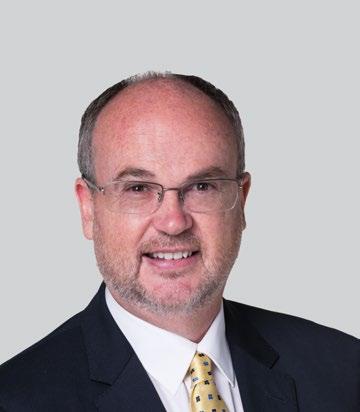
In many ways the pathway to global decarbonisation starts in Western Australia and we are intent on maximising value for all our people through the opportunities prevailing in our battery and critical minerals industry. Since the middle of the last decade, Western Australia has welcomed over $9 billion of investment across the sector, including the establishment of globally significant mineral processing facilities. Western Australian companies have forged strong relationships with international partners to ensure that the advantages of reduced carbon emissions and economic benefits offered by co-location of mining and mineral processing are realised in the state.
According to the Department of Industry, Science and Resources’ Office of the Chief Economist, by the end of 2024, Western Australia could have up to 10% of global lithium hydroxide refining capacity, rising to over 20% of global lithium refining by 2028.
The Western Australian Government acknowledges the Traditional Custodians throughout Western Australia and their continuing connection to the land, waters and community. We pay our respects to all members of Aboriginal and Torres Strait Islander communities and their cultures, and to Elders past, present, and emerging.
» Two of the world’s largest producers of lithium - Tianqi Lithium (China) and SQM (Chile) –have partnered with local companies IGO and Wesfarmers to build and operate battery-grade lithium hydroxide facilities in Western Australia, with Tianqi commencing commercial production at its Kwinana plant in 2022. In addition, Albemarle (United States) is operating its own facility in Kemerton.
» Mining giant, BHP Nickel West commenced operations at its battery-grade nickel sulphate plant in Kwinana, Western Australia, in 2021.
» Major investments by Lynas Rare Earths and Iluka Resources are set to establish our state as one of the few jurisdictions in the world to offer processed rare earths outside of China.
These projects are a testament to the innovative and technical capability present in our state and the Western Australian Government’s ability to deliver its ambitions outlined in the Future Battery and Critical Minerals Industries Strategy first launched in 2019. We continue to set the bar high and maintain the vision to grow the state’s participation in global battery and critical mineral supply chains. Our primary goal of increasing domestic value-add will be done by providing a platform in Western Australia that is amenable to attracting new investment and establishing strategic partnerships with key international partners. There are many opportunities to be harnessed across Western Australia’s battery and critical minerals industries and I look forward to welcoming you and your business to Western Australia.
Hon Bill Johnston MLA Minister for Mines and Petroleum, Energy 2 — Western Australia: A Global Battery and Critical Minerals HubCritical minerals are vital to the well-being of the world’s economies, however, geological scarcity, geopolitical issues, trade policy and a range of other factors has increased the intensity in which countries are looking to secure these valuable commodities.
Critical minerals are fundamental to the world’s clean energy transition. The componentry of electric vehicles, wind turbines, solar panels, electrolysers, fuel cells and rechargeable batteries all require critical minerals.
Elec tric Vehicles
Lithium
Nickel
Manganese
Cobalt
Graphite
Rare ear th elements
Renewable Energy
Nickel
Manganese
Chromium
Cobalt
Silicon
Gallium
Germanium
Rare ear th elements
Energy storage
Nickel
Cobalt
High Purity Alumina
Graphite
Lithium
Manganese
Vanadium
Electronics
Antimony
Beryllium
Germanium
Lithium
Niobium
Indium
Rare ear th elements
High Purity Alumina
Platinum group elements
Scandium
Silicon
Tantalum
Tungsten
Battery value chain
Upstream:
Mining Raw Materials
Midstream:
Refining
Active Materials
Downstream:
Cell Manufacturing

Battery Pack Assembly
Integration Service and Maintenance
Re-use and Recycling
Critical minerals also have a range of medical, defence, telecommunication and aerospace applications.
The International Energy Agency has forecast that electric vehicles and energy storage systems alone will drive a 30-fold increase in critical mineral demand over the next 20 years. These two industries will account for about half of all mineral demand growth in that period. Forecast growth in renewable energy projects (wind, solar and hydrogen) will see a further uplift in critical mineral demand.
Western Australia is uniquely positioned to meet these global needs and is establishing itself as a destination of choice for investment across the battery and critical minerals value chains.
Western Australia: A Global Battery and Critical Minerals Industry Hub — 3
Western Australia has enjoyed decades of strong economic growth thanks to a booming resources and export industry. Economic growth has averaged 4.1% per annum over the past two decades, which is higher than almost all OECD countries over the same period.
Western Australia was one of the few jurisdictions to maintain strong economic growth throughout the COVID-19 pandemic, largely due to the uninterrupted operations of the state’s resources sector.
$404.5bn
Western Australia’s gross state product (GSP)
3.1%
Western Australia’s rise in real GSP in 2021-22
In 2021-22, Western Australia’s mineral sales totalled $179.5 billion.
Western Australia is a proven investment partner for those seeking to diversify and de-risk their supply chains. Western Australia is a reliable place to invest and has a long history of major mining and mineral processing successes. The state offers investors a stable investment environment, a robust and transparent regulatory approvals system, access to export markets and low barriers to international trade.
61%
Exports accounted for 61% of Western Australia’s GSP in 2021-22
46%
Mining accounted for 46% ($186.8 billion) of Western Australia’s GSP in 2021-22
$149 billion of major resources projects are in the pipeline (as at March 2023)
Western Australia shares a time zone with around one quarter of the world’s population and is strategically located in close proximity to key Asian markets. The Western Australia Government’s network of global investment and trade offices provide support and information for investors and buyers worldwide.
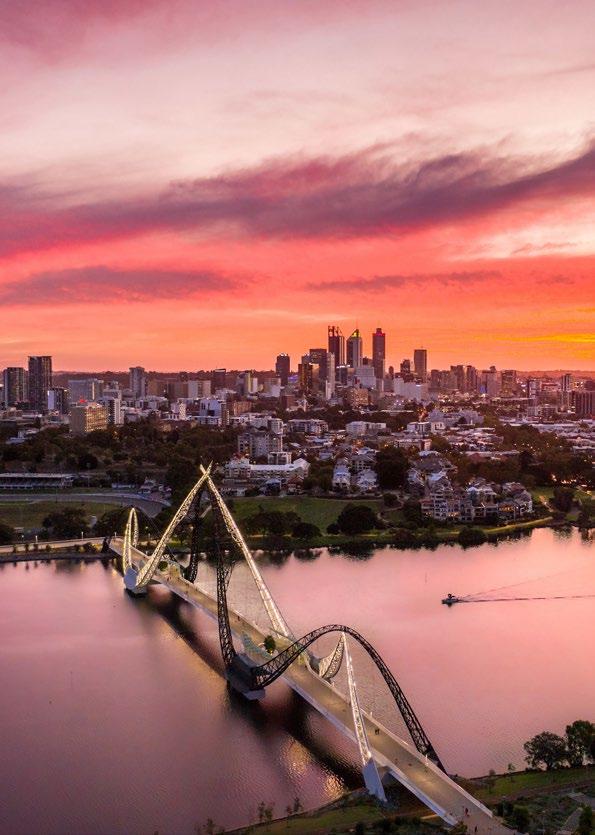
With a temperate climate and a wealth of natural, cultural and tourism destinations to enjoy, Western Australia offers one of the best lifestyles globally. Its capital city, Perth, is consistently ranked as one of the most liveable cities in the world. Home to a culturally diverse population, the nation’s most affordable housing market and world-class health care, education and infrastructure, there’s no better time to be welcomed to the state.
Invest and Trade Western Australia o ce Location currently being established
The Western Australian Government’s 17 international investment and trade offices operate across 6 regions.
Western Australia: A Global Battery and Critical Minerals Industry Hub
Western Australia is a major supplier of critical minerals. The state accounts for around half of global lithium production and is a major exporter of nickel, cobalt, manganese and rare earths.
Underpinning this supply is an outstanding mineral endowment. Our vast state—about 10 times the size of the UK—is blessed with some of the world’s largest deposits of critical minerals, with further discoveries anticipated following a recent boom in exploration activity.
Western Australia is home to a diverse range of battery and critical minerals including nearly all of the minerals on Australia’s critical minerals list. This rich mineral endowment is driving the state’s emergence as a global battery and critical mineral hub.
Western Australia is highly prospective for further critical minerals discoveries.
Companies can tap into government-funded incentives to de-risk exploration and gain precompetitive data to support investment decisions.
The WA Government has supported investment in mining exploration through its Exploration Incentive Scheme (EIS) since 2009.
The EIS is administered by the Geological Survey of Western Australia and aims to stimulate private sector resource exploration through regional geoscience data acquisition programs and co-funding drilling. The EIS collaborates with and supports Geoscience Australia’s $225 million Exploring for the Future Program and the national $218 million Mineral Exploration Cooperative Research Centre; a joint venture between industry, government and research organisations to explore for deposits beneath cover.
The precompetitive data funded by the EIS is freely available at www.dmp.wa.gov.au and can help exploration companies identify drilling targets prospective for critical minerals.
To provide targeted support for critical minerals exploration, the WA Government has also launched a $40 million geoscience initiative, building on the success of the EIS in 2022.
Western Australia’s lithium producers are some of the lowest cost producers in the world. Western Australia produces lithium at less than half the cost of Chile, the world’s second largest producer, and at around a quarter of the cost of US production.6 — Western Australia: A Global Battery and Critical Minerals Hub
Western Australia hosts a multi-billion dollar critical minerals processing industry. This includes global-scale investments in batterygrade lithium hydroxide and nickel sulphate plants, which provide essential inputs for the manufacturing of rechargeable batteries, and rare earth processing facilities, which are set to make Western Australia one of the few jurisdictions outside of China offering export quantities of processed rare earths.
There are a range of other midstream mineral processing activities planned in Western Australia, including the production of battery-grade vanadium, graphite, high purity alumina, cobalt sulphate, manganese sulphate and precursor cathode active materials, with significant funding already committed to many of these ventures.
This influx of investment has helped establish robust midstream capabilities in the state and positions Western Australia to host further value-adding industries, including the manufacturing of battery active materials.
There are strategic and economic benefits of locating midstream operations in Western Australian, including:
» increased access to raw material supply
» lower transportation costs and reduced carbon emissions through co-location of mining and processing operations
» improved waste management practices, including the disposal of naturally occurring radioactive materials associated with the mining and processing of some critical minerals
» diversification of midstream supply.
An investment in Western Australia’s midstream is an investment in long-term supply security. Raw material supply is set to be a key constraint for battery and
electric vehicle manufacturers, given forecast supply shortages and supply chain constraints. A Western Australian-based midstream project provides an alternative, low-cost route to market for local miners and explorers, providing a strategic advantage to midstream operators located in the state.
$2.2 billion
In Australian Government support has been committed to Western Australian battery and critical minerals projects in the past two years.
$1.25 billion
Export Finance Australia loan to Iluka Resources to develop the nation’s first integrated rare earth refinery in Eneabba.
$220 million
Northern Australia Infrastructure Facility loan for Hastings Technology Metals’ rare earths project in the Pilbara.
$250 million
Northern Australia Infrastructure Facility and Export Finance Australia ($125 million each) to support the expansion of Pilbara Minerals Limited’s Pilgangoora Operations in Western Australia.
$56 million
Export Finance Australia loan for Ecograf’s battery anode material facility in Kwinana.
$49 million
Modern Manufacturing Initiative grant for Australian Vanadium’s mine and processing plant in the Mid West.
The Western Australian and Australian Governments are offering significant financial support to help unlock new investment in mineral processing and manufacturing, including a range of debt and grant facilities. The Australian Government has committed over $2.2 billion to Western Australian battery and critical minerals projects in the past two years, with further funding available.
The Western Australian Government’s $285 million Investment Attraction Fund was established to
Operating/commited
Planned – with government funding in place
Lithium
Tianqi Lithium Australia
Production capacity:
48,000 tpa of lithium hydroxide
Capex: $700 million
Lithium
Covalent Lithium
Production capacity:
50,000 tpa of lithium hydroxide
Capex: $1.9 billion*
Nickel
BHP Nickel West
Production capacity:
100,000 tpa of nickel sulphate
Capex: $60 million
Graphite
Ecograf
Production capacity:
20,000 tpa of spherical graphite
Capex: $100 million
tpa = tonnes per annum
*inclusive of mine and concentrator
** Total project cost for stage 1 and 2
Rare earths
encourage new investment. Nearly $150 million worth of grant funds were allocated in 2022/23, including for five battery and critical mineral projects. Further funding will be available, with new energy industries, including batteries and critical minerals, a key focus in 2023/24. For more information visit
www.investandtrade.wa.gov.au/ opportunities/investment-attraction-fund
Hastings Technology Metals
Production capacity:
3,400 tpa NdPr^
Capex: $948 million**
The WA Government continues to support and encourage investment in Precursor Cathode Active Material (P-CAM) production in WA. Companies including IGO and Wyloo Metals (in partnership with a battery chemical manufacturer), Austvolt and Pure Battery Technology are pursuing this opportunity, which would make WA the home of Australia’s first commercially produced P-CAM.
Vanadium
Australian Vanadium
Production capacity:
11,200 tpa of vanadium
Capex: $600 million
Rare earths
Iluka Resources
Production capacity:
17,500 tpa of rare earth oxides
Capex: $1.2 billion
Lithium
Albemarle Lithium
Production capacity: 100,000 tpa of lithium hydroxide
Capex: $3 billion
^ Neodymium and Praseodymium, produced as a rare earth carbonate
Rare earths
Lynas Rare Earths
Production capacity:
12,000 tpa NdPr ^
Capex: $575 million^^
Western Australia: A Global Battery and Critical Minerals Industry Hub — 9
^^ Figure inclusive of Malaysian plant upgrades Production capacity and capex figures are provided as estimates only. Actual production and costs may varyThe WA Government is working with industry and research institutions to unlock downstream manufacturing opportunities in the state. This includes the manufacturing of battery cells, battery packs and equipment, and the establishment of reuse and recycling facilities for battery and critical mineral products.
Western Australia is well-placed to manufacture battery products locally, particularly as automation continues to shape the industry.
VSUN Energy, a 100% owned renewable energy and energy storage subsidiary of Australian Vanadium Limited, is designing and constructing a high renewable capacity Stand-alone power system (SPS) for IGO’s Nova Nickel Operation located 360km south-east of Kalgoorlie. The SPS will be trialled by IGO to power a mine process water bore pump, with a target of 100% renewable energy use. The Vanadium Flow Battery for the project has been constructed with 300kWh of available energy storage capacity. It will be paired with a solar array and integrated with a diesel generator to provide back up if required.
The state’s availability of affordable renewable energy, sovereign stability and a highly skilled and productive workforce are key enablers to manufacturing affordable, low-carbon products.
Western Australia’s growing battery market offers a significant investment opportunity for manufacturers seeking to co-locate with end-users, and the state’s close proximity to Asian markets provides an opportunity to export locally-produced battery cells and products to nearby growth markets.
Western Australia’s resources industry is set to be a significant consumer of battery products as the industry moves to decarbonise its operations. This includes the use of batteries in stationary power systems, locomotives, trucks and mining equipment.
Western Australia’s vast land mass also provides significant off-grid energy storage opportunities in remote communities and industries. Australia has a higher uptake of small-scale and gridscale ESS than OECD peers and is forecast to comprise 7% of global installations by 2030, making it the third largest market globally.
The WA Government has committed $14.6 million to ensure developments in Western Australia’s resources industry deliver improved outcomes for Aboriginal people.
The Department of Mines, Industry Regulation and Safety is establishing an Aboriginal Empowerment Unit to develop and implement their Aboriginal Empowerment Initiative program. This program will help ensure Western Australia resources industry is developed in a culturally respectful way and improve information access for Aboriginal people related to activities on their lands.
Western Australia’s robust and transparent regulatory frameworks ensure projects in the state meet the highest ESG standards.
Cultural heritage and environmental protection, equality and workplace safety are values underpinning Western Australia’s resources and manufacturing sectors.
WA’s government and industries are world leading in their commitment to human rights promotion, including the introduction of policies dealing with prominent issues such as modern slavery and gender equality.
Western Australia’s trademark ESG standard allows companies to enhance the marketability of their products and gain better access to capital markets, which are important factors to long-term commercial success.
The increasing use of ESG and green bonds by investment funds helps to illustrate the growing importance of maintaining a high ESG standard. Over $1.6 trillion worth of sustainability bonds were issued globally in 2021; more than double from the previous year.
The Western Australian Government issued its first green bonds in 2023, with $1.9 billion in funding raised, to support eligible government projects that deliver environmental outcomes. The bond issue was heavily oversubscribed with over $6 billion in bids from more than 60 investors.
Western Australia’s commitment to a clean energy future further bolsters the state’s position as a high ESG jurisdiction. The Western Australian Climate Policy outlines the WA Government’s plan for a climate resilient community and a prosperous low carbon future, with a target of net zero by 2050. This will be formalised through climate change legislation.
To support this commitment, the WA Government is working with all sectors of the
BHP is supplying Tesla with nickel from its Nickel West operation in Western Australia, one of the most sustainable and lowest carbon emission nickel producers in the world.
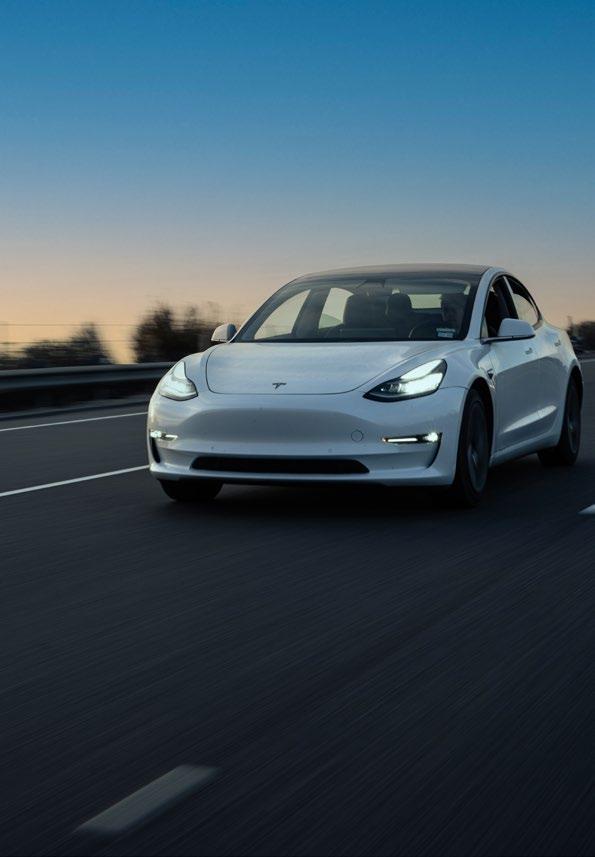
economy to reduce carbon emissions and is transitioning the state’s energy networks to allow for full renewable penetration. Western Australia’s resources sector is also setting clear decarbonisation goals, with the majority of Western Australia’s mining and energy companies targeting net zero emissions by 2050 or earlier.
The WA Government is investing over $142 million to streamline the state’s approvals system to accelerate project approvals, while ensuring companies continue to meet their environmental, cultural heritage, safety and social responsibilities. This includes $22.5 million targeting green energy projects.
Western Australia: A Global Battery and Critical Minerals Industry Hub — 11
BHP is pivoting towards ‘future-facing commodities’ - those commodities such as nickel and copper that are essential as the world decarbonises. Our Nickel West operations in Western Australia are a big part of this transition.
One of the mega-trends expected to shape our long run operating environment is the electrification of transport. Every electric car battery requires 40kg of nickel and BHP now sells 90% of our nickel to the global battery market. We expect demand for nickel in batteries will increase by 500% in the next decade.
BHP’s nickel sulphate plant is an Australianfirst, and is located south of Perth in Western Australia. It will produce over 100,000 tonnes of
nickel sulphate per year when fully operational – enough to make 700,000 electric vehicle batteries each year. Our investment to produce high purity nickel sulphate, along with nickel powder and briquettes, enhances Western Australia’s position as a supplier of choice for the growing global electric battery market. We believe Western Australia is uniquely placed to support the world’s transition to electric cars because of our highly regarded ethical and sustainable footprint. Our key markets are increasing their demand for clean nickel products and a clean supply chain and there is an increasingly vocal call by our customers to ensure that vehicle supply chains are addressing important social issues such as carbon footprint, water stewardship and social value. Companies are being recognised for their efforts to address these issues, and Western Australia is also blessed with a stable, reliable geopolitical environment, making long term contracts and investments safe for downstream supply chain customers. The state of Western Australia has been supportive of developing a battery materials industry through various partnerships and project funding, including support for the Future Battery Industries CRC which BHP Nickel West is a founding member of.

Western Australia has a highly-skilled and experienced workforce that has developed alongside the state’s world-leading resource sector. For decades, Western Australian workers and businesses have successfully built and operated complex export projects across highly competitive global supply chains including iron ore, natural gas, chemicals, critical minerals and defence. Western Australia’s resources sector employs over 150,000 workers and offers global expertise in mining, mineral processing and mining equipment, technology and services (METS). Western Australia has well established training institutions, which provide many of the skills and knowledge required to support the development of the state’s battery and critical mineral industries. Nonetheless, the WA Government remains focused on ensuring our local workforce has the skills necessary to meet the industry’s future needs. The WA Government has invested more than $280 million to upskill and reskill the workforce, including the development of education and training packages specific to the battery industry, such as the design and installation of on-grid and off-grid battery storage systems.

Australia has comparable labour costs to OECD peers, despite Australian workers enjoying some of the highest labour standards in the world.

Since Iluka’s antecedents began operations in Western Australia in the 1950s, we have evolved to become an international critical minerals company, with WA serving as the mineral processing hub of our Australian operations. In April 2022, Iluka announced the development of Australia’s first fully integrated rare earths refinery at Eneabba in WA’s Mid West. This will be a multi-generational asset for the downstream processing of Australia’s rare earth resources, putting Iluka at the forefront of the global transition to an electrified, low carbon economy.
Rare earths are among the key building blocks of this transition; and the Eneabba refinery will produce the downstream mineral products that are critical inputs across a range of industries and technologies including electric vehicles, sustainable energy, advanced electronics, medical and defence applications.

Beyond the production of rare earth oxides, the refinery also provides a foundation for undertaking potential further steps along the value chain in future, such as rare earth metallisation.
Iluka has been undertaking value additive mineral processing in WA since the 1970s. There are of course risks associated with downstream processing and we have sought to de-risk the Eneabba refinery project as much as possible. This includes our partnership with the Australian Government, which is providing a $1.25 billion non-recourse loan to construct and commission the refinery. From a technical perspective, we have engaged Carester, the world’s preeminent source of rare earths refining expertise, as a member of our project owners’ team.
The quality of the business outcomes we have achieved in WA reflects the strength of our relationships with a range of stakeholders. This includes the WA Government, with whom we have longstanding links by virtue of more than 70 years of operations in the state. In recent times, we have seen strong support from ministers and senior officials for our diversification into downstream rare earths processing.
We are very grateful for this support and it reinforces our central focus on delivering the Eneabba refinery for our shareholders and stakeholders more broadly.
14 — Western Australia: A Global Battery and Critical Minerals Hub
Western Australia has globally-recognised research capabilities in the areas of mining and mineral processing.
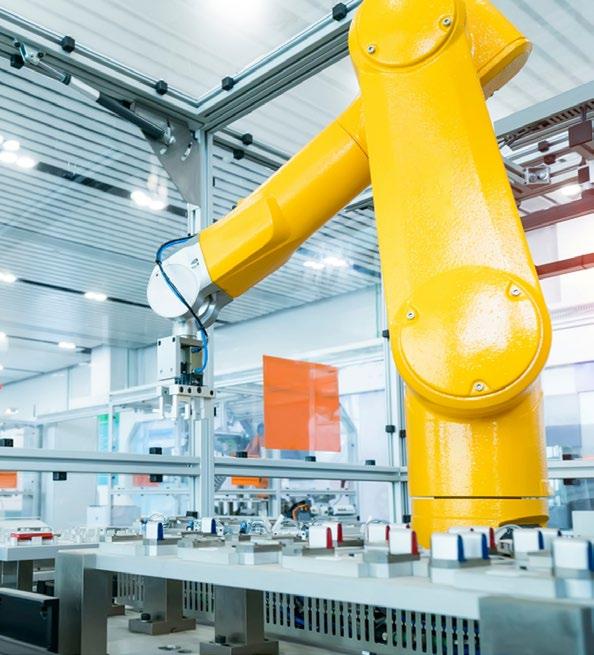
The WA Government recognises the powerful role that research plays in ensuring Western Australian exports remain globally competitive. The WA Government directly supports a portfolio of research and innovation projects valued at over $75 million across the mining value chain including exploration, mineral processing and establishing new products and markets through the Minerals Research Institute of Western Australia (MRIWA).
Western Australia’s Curtin University — which is ranked second in the world for mineral and mining engineering, has partnered with industry on a $240 million research collaboration that aims to de-risk the uptake of new technologies and support the commercialisation of critical mineral projects. A cornerstone of the research partnership will be the construction of pilot and demonstration-scale testing facilities in Western Australia, helping to further grow the state’s research infrastructure and expertise.
Western Australia also proudly hosts the nation’s Future Battery Industries Cooperative Research Centre (FBICRC), a $127 million research collaboration between industry, government and Australia’s leading universities and research institutions. The FBICRC aims to enhance the competitiveness of Australia’s battery industry, through the delivery of industry-directed research projects, targeting all segments of the battery value chain. Companies from around the world have partnered with the initiative, including BHP and BASF, who are among the largest mining and chemical manufacturing companies (respectively) in the world.
(QS - Quacquarelli SymondsWorld University Ranking 2022)
The FBICRC aims to demonstrate the commercial and technical viability of manufacturing precursor cathode active materials in Australia. In 2022 a pilot plant was launched at Curtin University’s Perth campus. It’s designed to produce nickelcobalt-manganese precursor powder using minerals sourced from Western Australia. This project is a significant body of work that will help demonstrate Western Australia’s capabilities in battery active material manufacturing and de-risk investment in a commercial-scale facility.
“This facility is instrumental to the creation of a battery materials industry in Australia, to perform continuous development and pilot production of active materials and demonstrate Australia’s capability to produce on-spec battery materials for this rapidly growing industry.” Curtin University Deputy Vice Chancellor, Research, Chris Moran.
Western Australia has an abundance of affordable, low-emissions energy sources to power the state’s resource and manufacturing industries.
Western Australia has exceptional wind and solar resources, a large land mass and low population density, which provides a natural advantage for companies seeking to decarbonise their operations. The north of the state offers the highest solar irradiance per square kilometre in the world, while the mid-west and southern regions of the state have some of the country’s most productive wind resources.
The state’s major power system, the South West Interconnected System, is on a clear trajectory towards being able to meet up to 100% of demand from renewable energy sources. On average, renewables currently account for around a third of electricity generated in the SWIS, through utilityscale wind and solar projects and a high penetration of residential rooftop solar; over one in three households have rooftop solar in the state. This is set to grow as more renewable energy projects come on line. To support the State’s transition to renewable energy, the WA Government has committed to retiring remaining state owned coal-fired power generation assets by 2030. Further, an estimated $3.8 billion is to be invested in new green power infrastructure that is expected to result in a 40% reduction in emissions on the SWIS.

The Western Trade Coast is a world-class industrial ecosystem covering 3,900 hectares south of Perth and includes the Australian Marine Complex, Kwinana Industrial Area, Rockingham Industry Zone and Latitude 32.

This industrial precinct is home to a range of strategic industries, including critical minerals, hydrogen and defence.
The Western Australian Government is also introducing climate change legislation to formalise the state’s goal of net zero emissions by 2050, with renewable energy already being used to power many of Western Australia’s offgrid mining and mineral processing operations. Western Australia offers investors industrialscale volumes of cost competitive natural gas, an important transition fuel towards a decarbonised economy. Western Australia is the world’s third largest producer of liquefied natural gas (LNG). Under the WA Government’s domestic gas policy, LNG exporters that operate in the state must also make gas available in the local market. This longstanding policy has helped power the state’s resources sector and provides optionality to companies seeking a diverse low emission energy mix.
Western Australia offers world-class export infrastructure and serviced industrial land to support investment across the battery and critical mineral value chain. This includes 18 ports, state-wide road, rail and energy networks, and heavy and general industrial precincts. At the centre of Western Australia’s industrial ecosystem are 12 dedicated Strategic Industrial Areas (SIAs). These industrial hubs provide
16 — Western Australia: A Global Battery and Critical Minerals Hubconnections to existing export networks, services, and local skilled workforces. Investors that choose to locate in an SIA can benefit from lower establishment costs, as well as industrial synergies associated with co-locating with other critical mineral processors and chemical manufacturers.
The WA Government is committed to working with prospective proponents to negotiate land allocation and attractive lease offerings, with investment in value-add manufacturing considered a high priority.

The Pilbara Port Authority in Western Australia’s north is the world’s largest bulk export port authority.Testimonial
Western Australia offers a number of unique advantages to doing business, including a significant critical mineral endowment and an excellent reputation for safety, innovation and environmental practice. These provide a strong foundation for the development of the Australian critical minerals industry as a leading supplier to global supply chains.
Lynas Rare Earths is the world’s only significant producer of separated rare earths outside of China. The materials we produce are essential to the manufacturing of products to reduce air pollution and transition to a low carbon economy. We are actively engaged with governments around the world on the development of sustainable and resilient critical minerals supply chains to meet the growing market demand.
Lynas has a well-developed plan to grow with the market including the development of a new rare earths processing facility in Kalgoorlie, with a project cost of around $575 million including associated upgrades at the Lynas Malaysia plant.

This is a foundation project for the Lynas 2025 growth vision and once operational, mixed rare earths carbonate will be shipped directly from Kalgoorlie to the Lynas plant in Malaysia for further processing, or to the proposed US Rare Earths Separation Facility. The Kalgoorlie plant has been designed to facilitate processing of third-party rare earths concentrate from other Australian projects as they come online.
Lynas has also announced an approximately $500m capital expansion at its Mt Weld mine, located south-east of Laverton. This over $1 bn investment in the Goldfields will double capacity to meet market growth and demand.
Successful and competitive downstream processing requires the development of industry and resource-specific capabilities and cost-efficient operations. Lynas is well positioned with significant inhouse Intellectual Property with respect to rare earths processing and a strong focus on safe, cost-efficient operations.
Lynas has received excellent government support for our operations in the state’s Goldfields region, including Lead Agency Support from the WA Government.
The location where we’re building the new facility had been identified by the WA Government and the City of KalgoorlieBoulder as a potential site for critical minerals processing and the Lynas Rare Earths Processing Facility in KalgoorlieBoulder can be the first step in developing a critical minerals hub in the region.
Western Australia: A Global Battery and Critical Minerals Hub
The WA Government will make your entry into Western Australia as seamless as possible. The Department of Jobs, Tourism, Science and Innovation’s Invest and Trade Western Australia team provides a one-stop shop for incoming trade and investment enquiries.
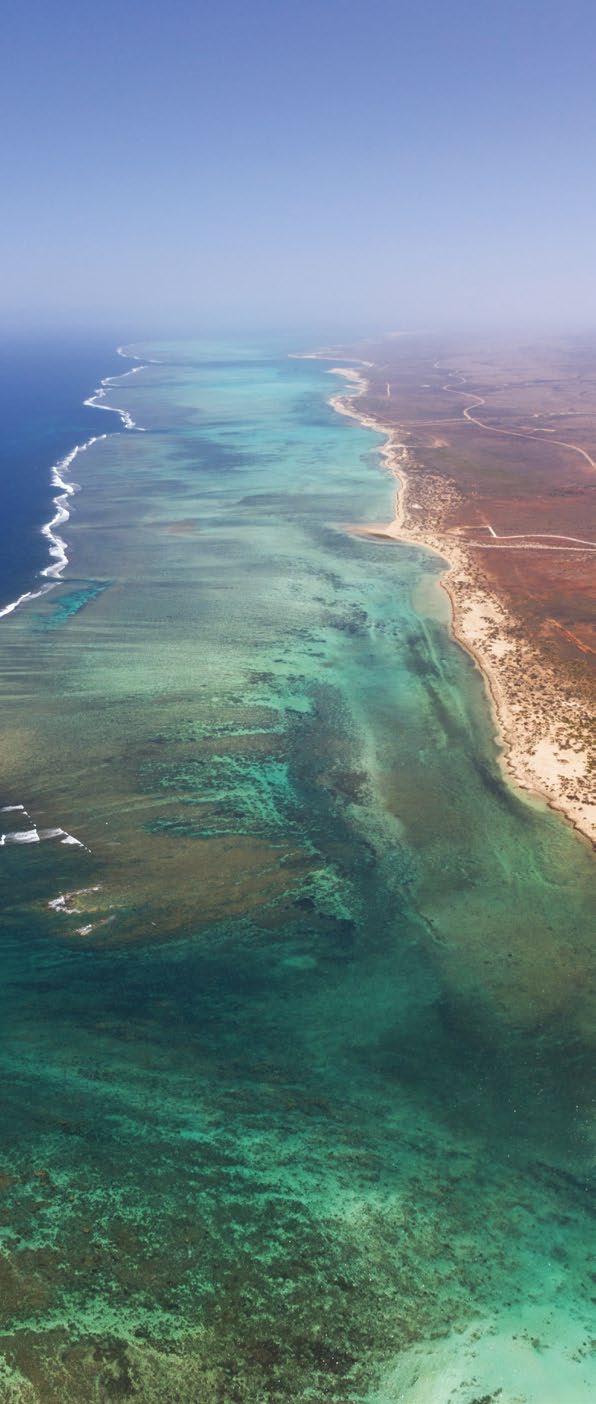
At Invest and Trade Western Australia, a team of business facilitation professionals will work with you to assess your business requirements and connect you with relevant government and industry stakeholders, to fast track your entry into Western Australia.
Through a network of local and international offices, the team can help you navigate the Western Australian investment and trade ecosystem. Invest and Trade Western Australia can help you by providing:
» a dedicated point of contact for your business or project
» introductions to local relevant suppliers, consultants, organisations, agencies and industry bodies
» investment ready project support
» assistance with site visits
» a guide to working in Western Australia - business registration, property, visas, banking, employment standards and Australian tax – to accelerate investment
» access to relevant and timely market intelligence to assist you to develop your market entry strategy
» advice on business support grants, funding, incentives and projects.
Contact us
Please contact the Invest and Trade Western Australia team at investandtrade@jtsi.wa.gov.au
Department of Jobs, Tourism, Science and Innovation
Level 11, 1 William Street
Perth WA 6000
T: +61 (08) 6277 3000

E: investandtrade@jtsi.wa.gov.au
W: www.investandtrade.wa.gov.au
Disclaimer
The information is provided in good faith and believed to be accurate and current at the time of publication but this cannot be guaranteed. The State of Western Australia makes no representation, warranty or claim of any kind (express or implied) about the completeness, accuracy, reliability or suitability, with respect to the information. The reader is solely responsible for making their own assessment of the information and should make and rely on their own enquires, research and judgements in making decision affecting their own or any other persons’ interest.
To the fullest extent permitted by law, the State of Western Australia, its officers, employees, agents and representatives, shall in no way be liable, in negligence or howsoever, for any loss, damage, cost or expenses (regardless of whether the loss is direct, indirect or consequential) caused, sustained or incurred by anyone using or relying on the information, even if such information is or turns out to be wrong, incomplete, out of date or misleading.